The Edmonton Oilers fired head coach Jay Woodcroft, along with assistant Dave Manson, on Sunday. With the Oilers off to a horrid 3-9-1 start and their playoff aspirations already in question, it’s not shocking that they made a move to shake things up. But did Woodcroft deserve his fate? Was coaching truly the issue?
To get a complete picture of this season’s rocky start, we’ll begin by going back to last season. The Oilers were a very average team for the first half of the season in 22-23, at least as far as their record went. They hovered around the wildcard playoff positions in the standings for the first half of the season. Then, they turned it up down the stretch, which also happened to coincide fairly closely with the acquisition of Mattias Ekholm.
Late in the season, their 5v5 expected goal rates improved noticeably on both sides of the puck. Finishing and goaltending were roughly break even over the course of the full season, in terms of G/xG. We also know their powerplay was lethal and while their penalty kill wasn’t necessarily a strength, it was good enough to provide a positive net impact from special teams.
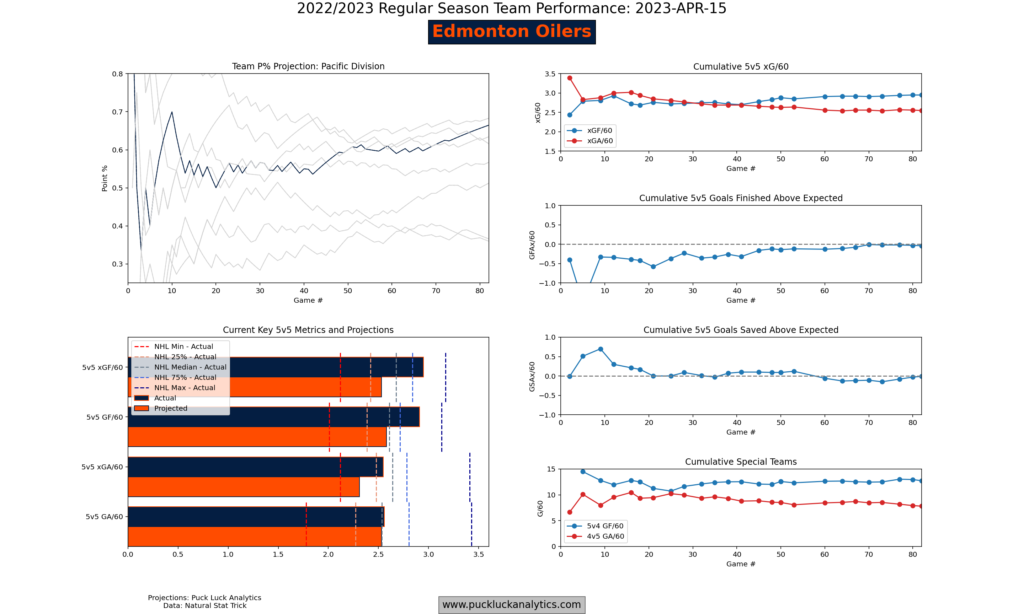
Fast forward back to the 23-24 season and we see a roster that is largely unchanged from the one that finished the 22-23 season. And as we look at the numbers from this season, we find some trends that continue from last season along with a few big differences.
The Oilers’ 5v5 expected goal rates, both for and against, are quite good this season. They also look much like the rates the team produced late in the 22-23 season. Strong numbers here are typically good indicators of a good team, so how did the Oilers stumble out to the 3-9-1 record that left Jay Woodcroft packing his bags?
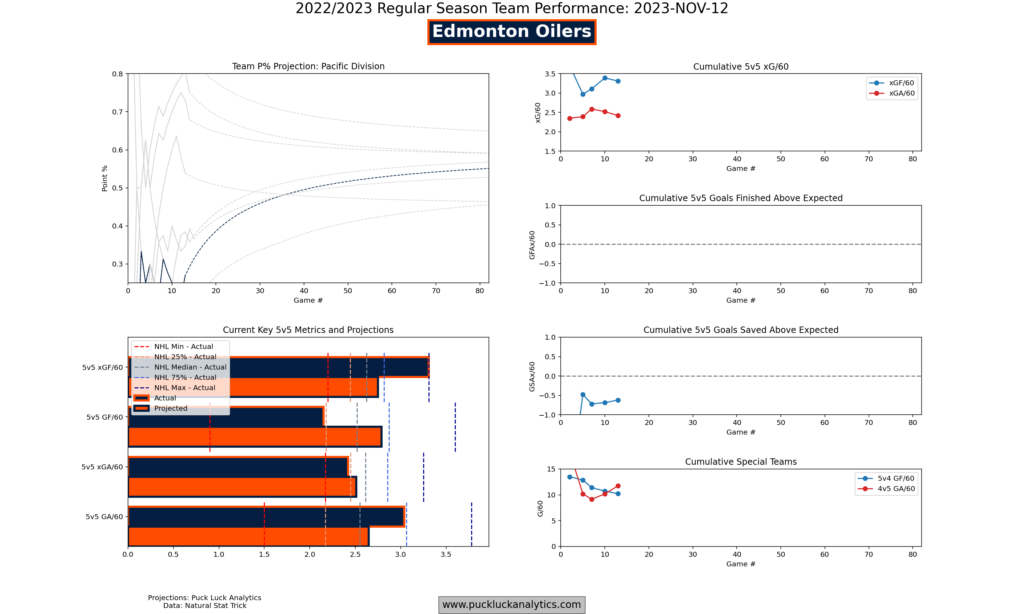
First, the Oilers’ special teams haven’t been as strong as they were last season. But they are still in break even territory and don’t look like a huge problem area. It’s the 5v5 finishing and goaltending where the problems lie. Goaltending has been a very well documented issue, capped off by Jack Campbell’s demotion to the AHL last week. The team has allowed more than 0.5 goals above expected per 60 on the season so far at 5v5. At the other end, finishing has actually been an even bigger issue. It’s been so poor that it hasn’t even registered a point within the standard axis on my plot.
Looking at the players that have eclipsed the 200 5v5 minute mark this season to get an updated player projection in the model, we see a similar story playing out at the individual level. 5v5 expected goal shares are strong for all 4 skaters. And in all 4 cases, on-ice expected goals are being converted to actual goals at a very low rate. The underlying metrics that are more predictive have been strong and 3 of the 4 skaters have upward adjustments to their projected impact with the new data incorporated.
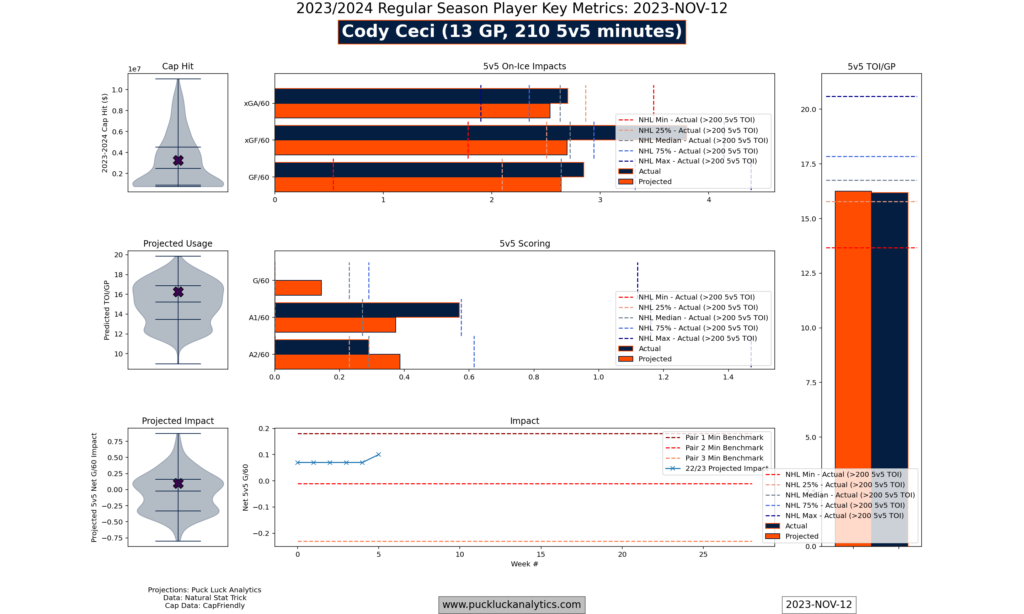
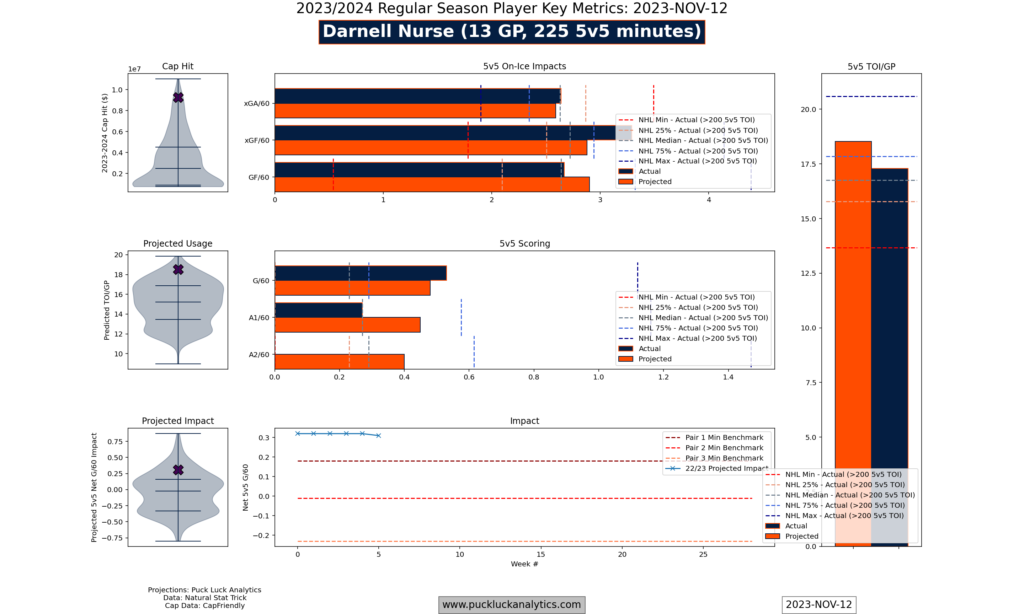
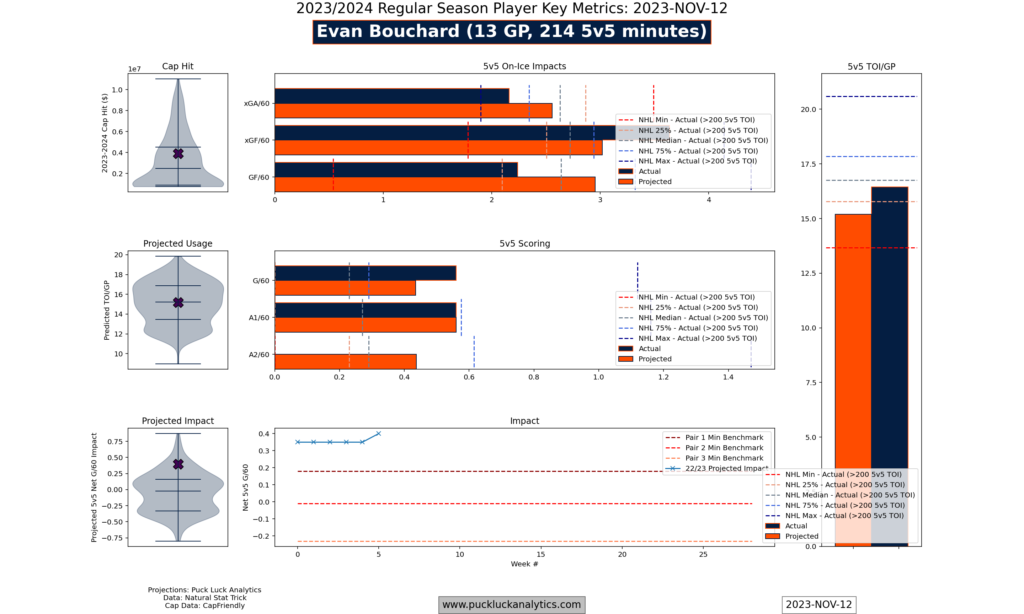
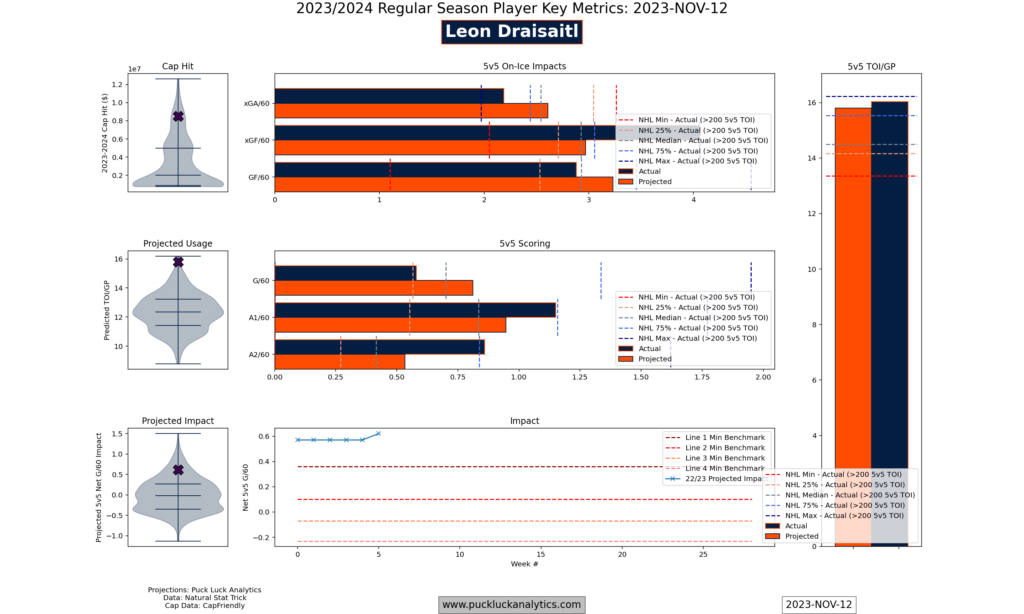
When we look at the evidence above, it does look like Jay Woodcroft drew the short straw. The team was playing well. Their key team metrics are similar to the way they played down the stretch last year, in fact. It’s the more volatile, less predicable in the short term finishing and goaltending that have sewered the early part of the Oilers season. The bounces seemed to all go the other way for the first 14 games of the season.
History suggests they cannot stay at the levels they’re at. On the whole season, most teams came very close to break even in both regards last year. Teams with extreme results were still within 0.5 goals saved/finished above/below expected. Both metrics are overdue for some natural correction. New Head Coach Chris Knoblauch will likely get credit when they do.
